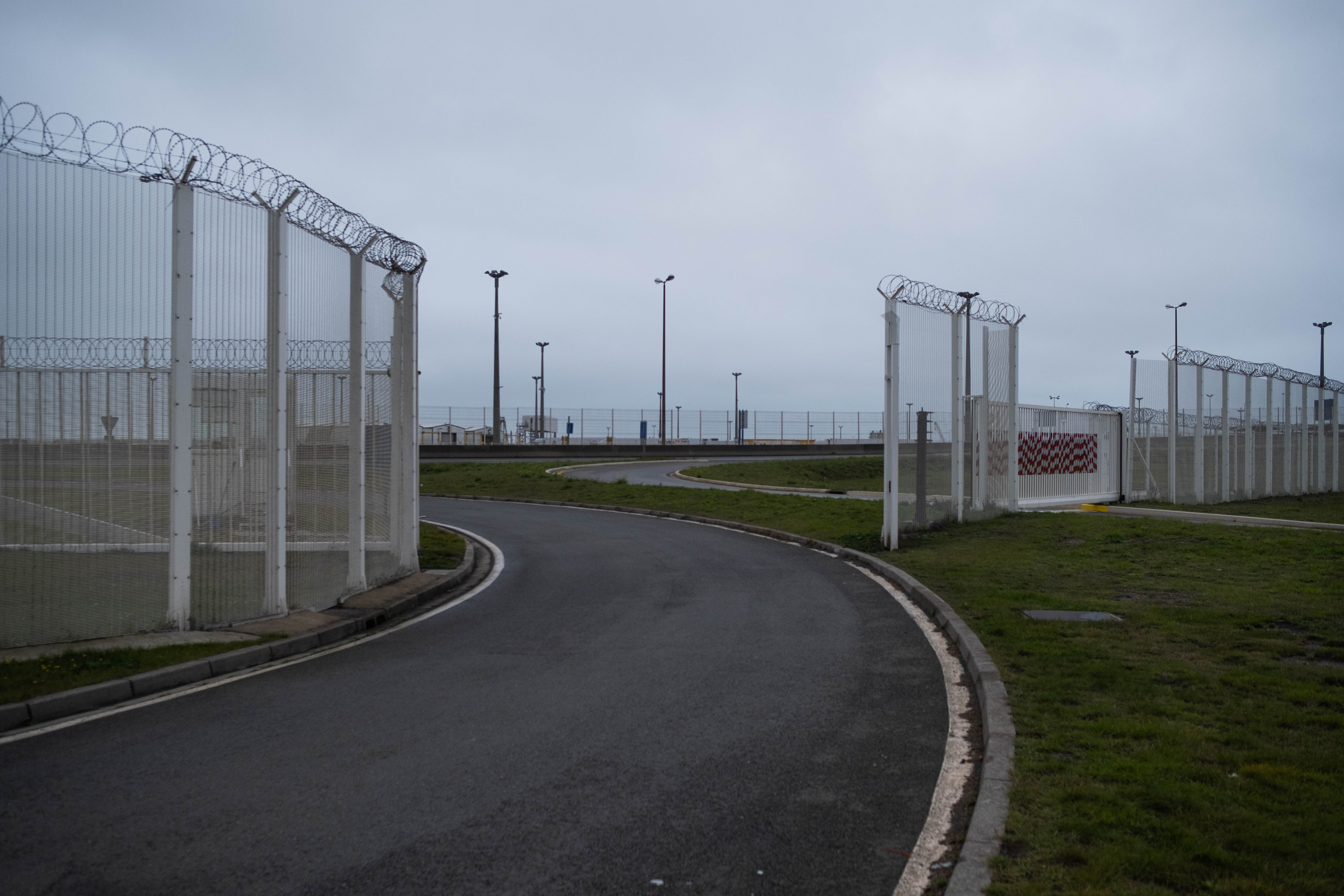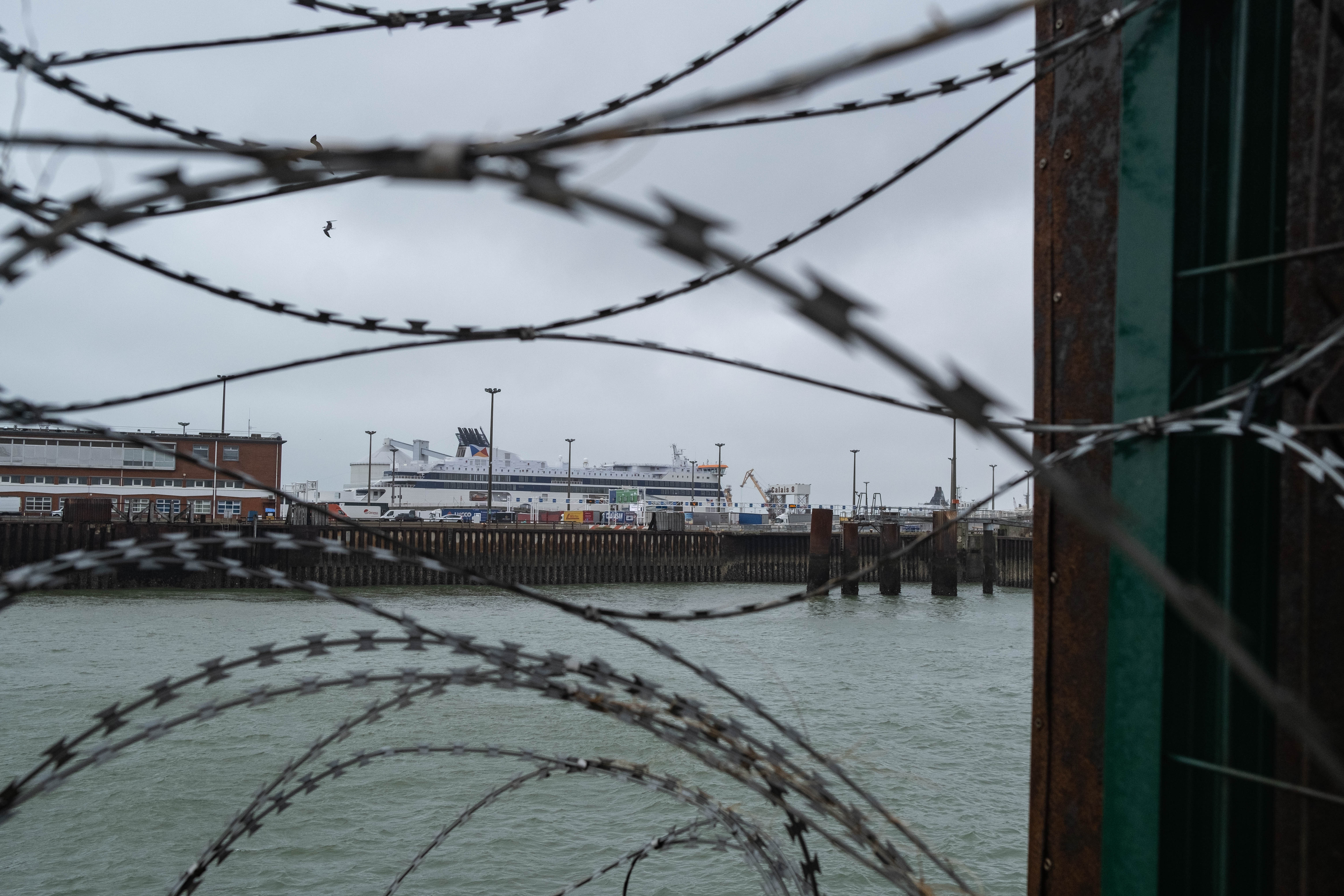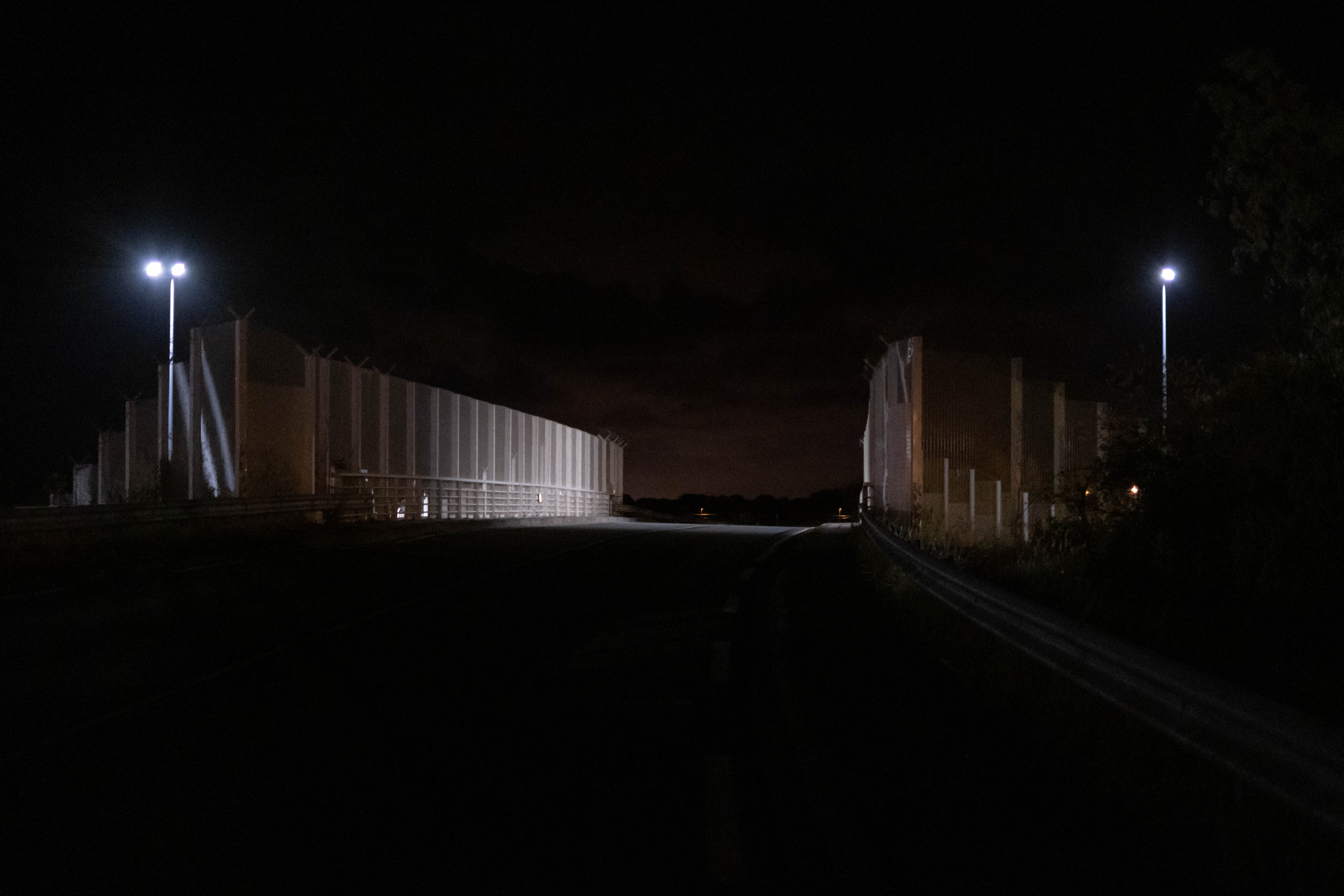This article originally appeared on VICE France.
Tall white fences lined with barbed wire – welcome to Calais. The city in northern France is an obligatory stop for anyone trying to reach the UK across the channel. But some travellers are more welcome than others, and in recent decades, a slew of private security companies have profited millions of pounds off a very expensive – an unattractive – operation to keep migrants from crossing.
Videos by VICE
Every year, thousands of passengers and lorries take the ferry at the Port of Calais-Fréthun, a trading route heavily relied upon by the UK for imports. But the entrance to the port looks more like a maximum-security prison than your typical EU border. Even before Brexit, the UK was never part of the Schengen area, which allows EU residents to move freely across 26 countries. For decades, Britain has strictly controlled its southern border in an attempt to stop migrants and asylum seekers from entering.
As early as 2000, the Port of Calais was surrounded by a 2.8 metre-high fence to prevent people from jumping into lorries waiting at the ferry departure point. In 1999, the Red Cross set up a refugee camp in the nearby town of Sangatte which quickly became overcrowded. The UK pushed for it to be closed in 2002 and then negotiated a treaty with France to regulate migration between the two countries.

The 2003 Le Toquet Treaty allowed the UK to check travellers on French soil before their arrival, and France to do the same on UK soil. Although the deal looks fair on paper, in practice it unduly burdens French authorities, as there are more unauthorised migrants trying to reach the UK from France than vice versa.
The treaty effectively moved the UK border onto French territory, but people still need to cross the channel to request asylum. That’s why thousands of refugees from conflict zones like Syria, Eritrea, Afghanistan, Sudan and Somalia have found themselves stranded in Calais, waiting for a chance to cross illegally – often in search of family members who’ve already made it to the UK. Many end up paying people smugglers to hide them in lorries or help them cross by boat.
These underlying issues came to a head during the Syrian crisis, when refugees began camping out near Calais in 2014. The so-called Calais Jungle became infamous for its squalid conditions, and at its peak, hosted more than 7,000 people. They were all relocated to other centres in France before the camp was bulldozed in 2016. That same year, the UK also decided to build a €2.7 million border wall in Calais to block access to the port from the camp, but the project wasn’t completed until after the camp was cleared, attracting a fair deal of criticism. Between 2015 and 2018, the UK spent over €110 million on border security in France, only to top it up with over €56 million more in 2018.

But much of this public money actually flows into the accounts of private corporations, hired to build and maintain the high-tech fences and conduct security checks. According to a 2020 report by the NGO Care4Calais, there are more than 40 private security companies working in the city. One of the biggest, Eamus Cork Solutions (ECS), was founded by a former Calais police officer in 2004 and is reported to have benefited at least €30 million from various contracts as of 2016.
Stéphane Rosière, a geography professor at the University of Reims, wrote his book Iron Borders (only available in French) about the many border walls erected around the world. Rosière calls this the “security-industrial” complex – private firms that have largely replaced the traditional military-industrial sector in Europe since WW2.
“These companies are getting rich by making security systems adaptable to all types of customers – individuals, companies or states,” he said. According to Rosière, three-quarters of the world’s border security barriers were built in the 21st century.

Brigitte, a pensioner living close to the former site of the Calais Jungle, has seen her town change drastically over the past two decades. “Everything is cordoned off with wire mesh,” she said. “I have the before and after photos, and it’s not a pretty sight. It’s just wire, wire, wire.” For the past 15 years, Brigitte has been opening her garage door for asylum seekers to stop by for a cup of tea and charge their phones and laptops, earning her the nickname “Mama Charge”.
“For a while, the purpose of these fences and barriers was to stop people from crossing,” said François Guennoc, president of L’Auberge des Migrants, an NGO helping displaced migrants in Calais.
Migrants have still been desperate enough to try their luck. “They risked a lot to get into the port area, and many of them came back bruised and battered,” Guennoc said. Today, walls and fences are mainly being built to deter people from settling in new camps near Calais after being evicted.

In the city centre, all public squares have been fenced off. The city’s bridges have been fitted with blue lights and even with randomly-placed bike racks, so people won’t sleep under them.
“They’ve also been cutting down trees for some time now,” said Brigitte, pointing to a patch near her home that was once woods. Guennoc said the authorities are now placing large rocks in areas where NGOs distribute meals and warm clothes, to prevent displaced people from receiving the donations. “The objective of the measures now is also to make the NGOs’ work more difficult,” he said.
According to the NGO Refugee Rights Europe, about 1,500 men, women and minors were living in makeshift camps in and around Calais as of April 2020. In July 2020, French police raided a camp of over 500 people, destroying residents’ tents and belongings, in the largest operation since the Calais Jungle was cleared. An investigation by Slate found that smaller camps are cleared almost every day by the French police, even in the middle of winter. NGOs keep providing new tents and basic necessities to displaced residents, but they are frustrated by the waste of resources. The organisations are also concerned about COVID-19 outbreaks in the camps.

As VICE World News has previously reported, the crackdown is only pushing people to take more desperate measures to get into the UK. Boat crossings reached record-highs in 2020, and four people have died since August 2020 while trying to cross, by land and sea. “When you create an obstacle, people find a way to get around it,” Guennoc said. “If they build a wall all the way along the coast to prevent boat departures, people will go to Normandy – and that has already started.” Crossing the open sea puts migrants at even greater risk.
Rosière agrees security measures are only further endangering migrants.“All locks eventually open, no matter how complex they may be. It’s just a matter of time.”
He believes the only parties who stand to profit from the status quo are criminal organisations and private security firms: “At the end of the day, this a messed-up use of public money.”
Scroll down to see more pictures.









